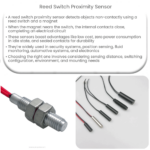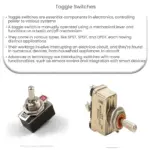Explore the 7 most common electrical switches used in industrial applications – Toggle, Push Button, Selector, Proximity, Pressure, Limit, and Foot switches.
The 7 Most Common Types of Electrical Switches for Industrial Applications
In the world of industrial applications, the proper selection of electrical switches is paramount to ensure smooth and efficient operations. Here are seven of the most common types of electrical switches used in industrial settings:
- Toggle Switches
Toggle switches are perhaps the most basic type of electrical switch, used for simple on-off functions. They operate via a lever that’s toggled back and forth to open and close the electrical circuit.
- Push Button Switches
Push button switches are activated by pressing, or “pushing,” a button to open or close an electrical circuit. They are widely used in industrial machinery for various functions like starting, stopping, or resetting a process.
- Selector Switches
Selector switches have a rotary knob or lever that can be turned to select from a number of different options or settings. They are often used in situations where multiple settings or operations need to be manually controlled.
- Proximity Switches
Proximity switches detect the presence or absence of an object without physical contact. They work on magnetic, inductive, capacitive, or optical principles, making them invaluable in automated industrial processes.
- Pressure Switches
Pressure switches react to changes in pressure, typically in fluid or gas systems. They are crucial for maintaining safe levels of pressure in various industrial systems, preventing over-pressurization or under-pressurization.
- Limit Switches
Limit switches are used to detect the physical limits of a machine or a process. They ensure the machinery operates within set boundaries, thereby enhancing safety and efficiency.
- Foot Switches
Foot switches are pedal-activated switches that allow the user to operate machinery while keeping their hands free for other tasks. They’re commonly used in industrial environments where multitasking is necessary.
In conclusion, the type of switch selected is highly dependent on the specific application, each offering unique features that enhance operational efficiency, safety, and convenience in different industrial settings.




